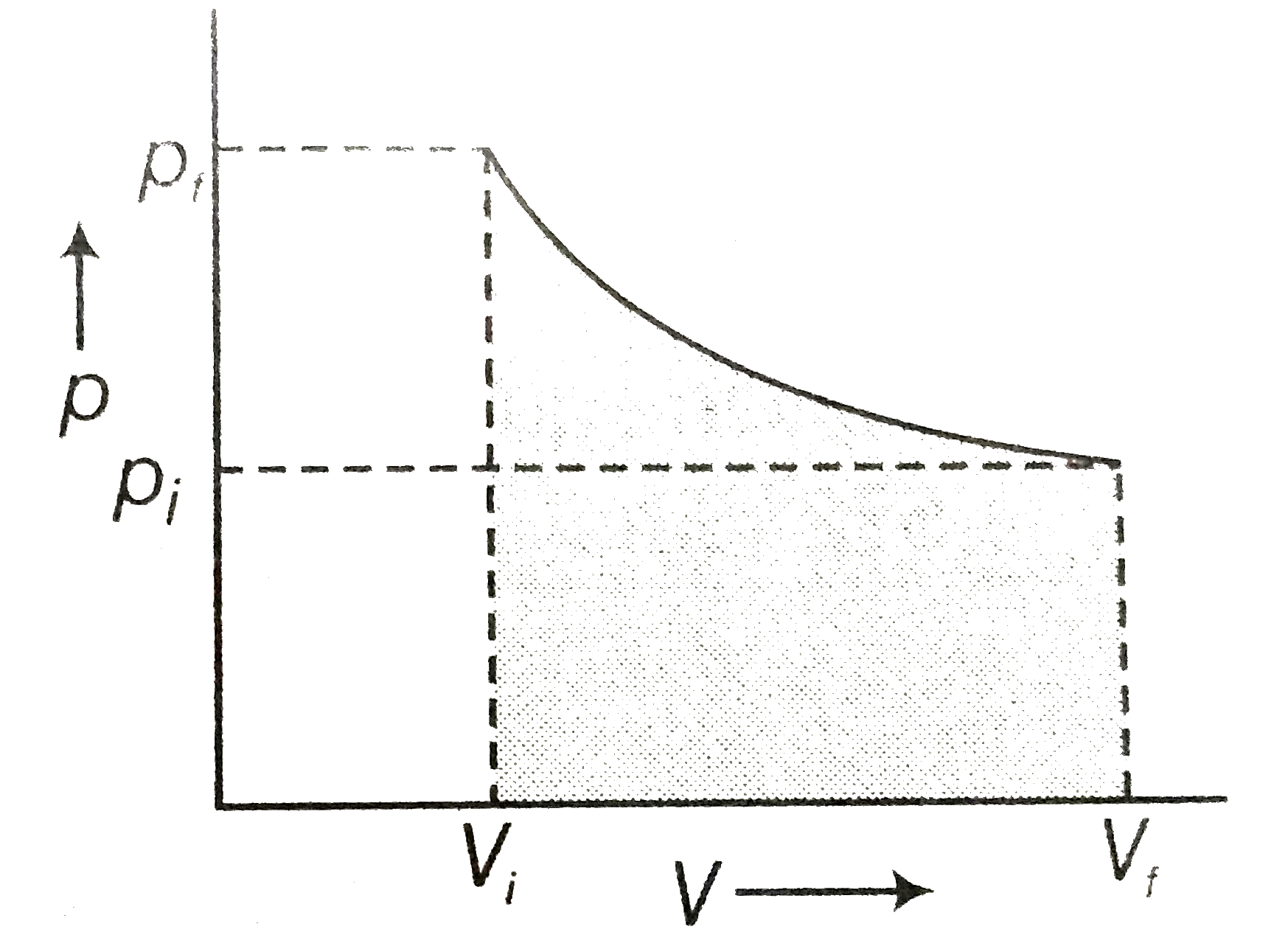How will you calculate work done on an ideal gas in a compression, when change in pressure is carried out in infinite steps?
When compression is carried out in infinite steps with change in pressure, it is a reversible process. The work done can be calculated form p−V plot as shown in the given figure. Shaded area under the curve represents the work done on the gas.

Topper's Solved these Questions
Similar Questions
Knowledge Check
- Question 1 - Select One
When an ideal gas is compressed isothermally then its pressure increase because:
Aits potential energy decreasesBits kinetic energy increases and molecules move partCits number of collisions per unit area with walls of container increasesDMolecular energy increases - Question 2 - Select One
When an ideal gas is compressed isothermally then its pressure increase because:
Aits potential energy decreasesBits kinetic energy increases and molecules move apartCits number of collisions per unitl area with walls of container increasesDmolecules energy increases - Question 3 - Select One
The work done when an ideal gas is compressed isothermally by 1 litre against a constant atmospheric pressure is
A1 JB-1 JC+ 0.1013 kJD-1013 J
What will be the work done on an ideal gas enclosed in a cylinder, when it is compressed by a constant external pressure pext , in a single step as shown in figure? Explain graphically.
 View Solution
View SolutionWhat will be the work done on an ideal gas enclosed in a cylinder, when it is compressed by a constant external pressure pext , in a single step as shown in figure? Explain graphically.
 View Solution
View SolutionCalculate the work done when one mole of an ideal monoatomic gas is compressed adiabatically. The initial pressure and volume of the gas are 105N/m2 and 6 litre respectively. The final volume of the gas is 2litres. Molar specific heat of the gas at constant volume is 3R/2.
View SolutionThe work done in an isothermal reversible change involving an ideal gas is given by
View SolutionPressure volume (PV) work done by an ideal gas system at constant volume is
View Solution


